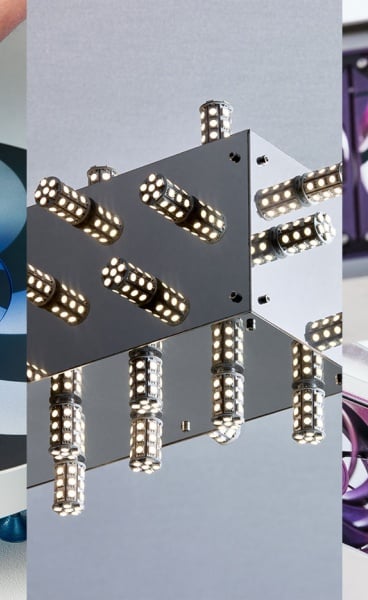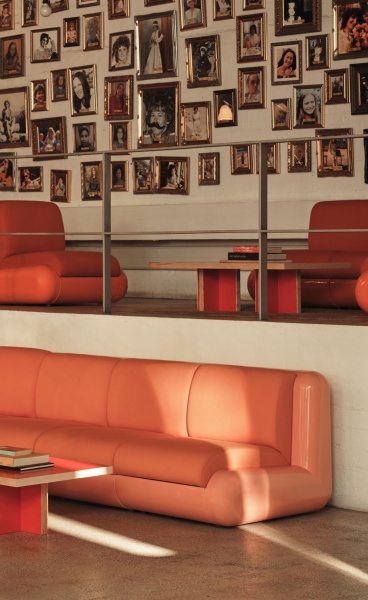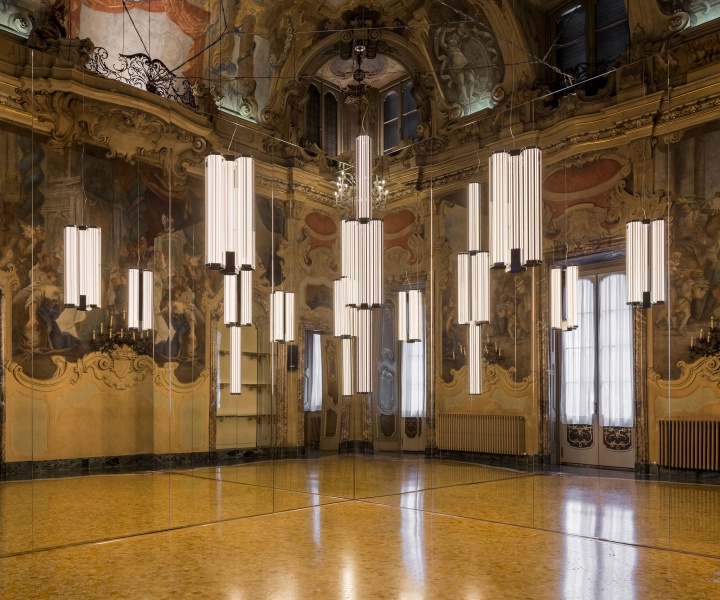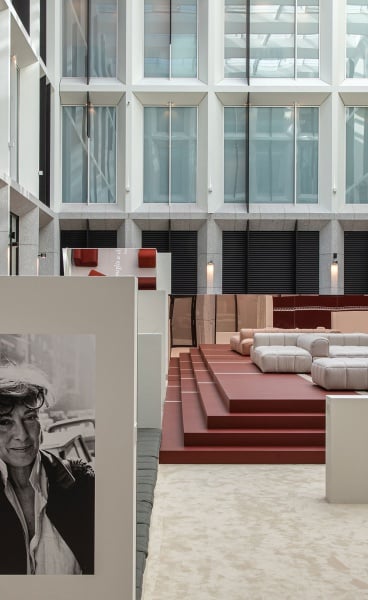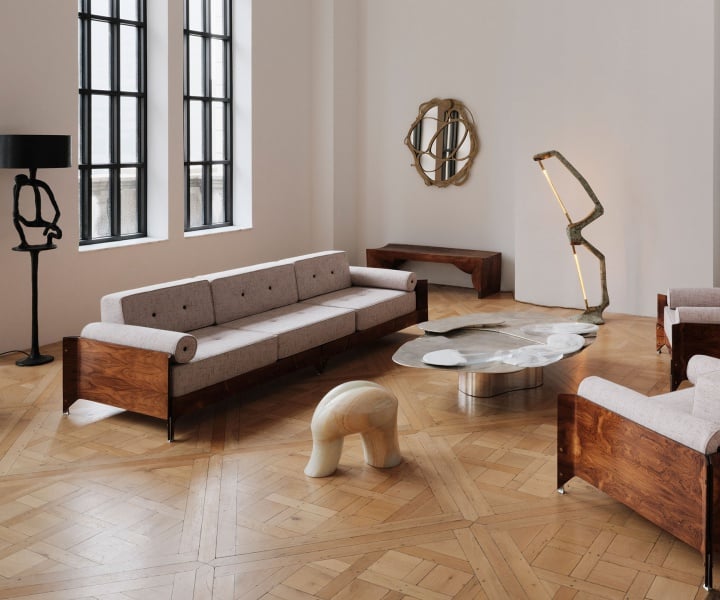Project Name
RYÙ PeelPosted in
Design, Interior DesignLocation
Area (sqm)
120Completed
June 2019| Detailed Information | |||||
|---|---|---|---|---|---|
| Project Name | RYÙ Peel | Posted in | Design, Interior Design | Location |
1474 Peel Street Montreal, QC H3A 1S8
Canada |
| Architect | Ménard Dworkind Architecture & Design | Area (sqm) | 120 | Completed | June 2019 |
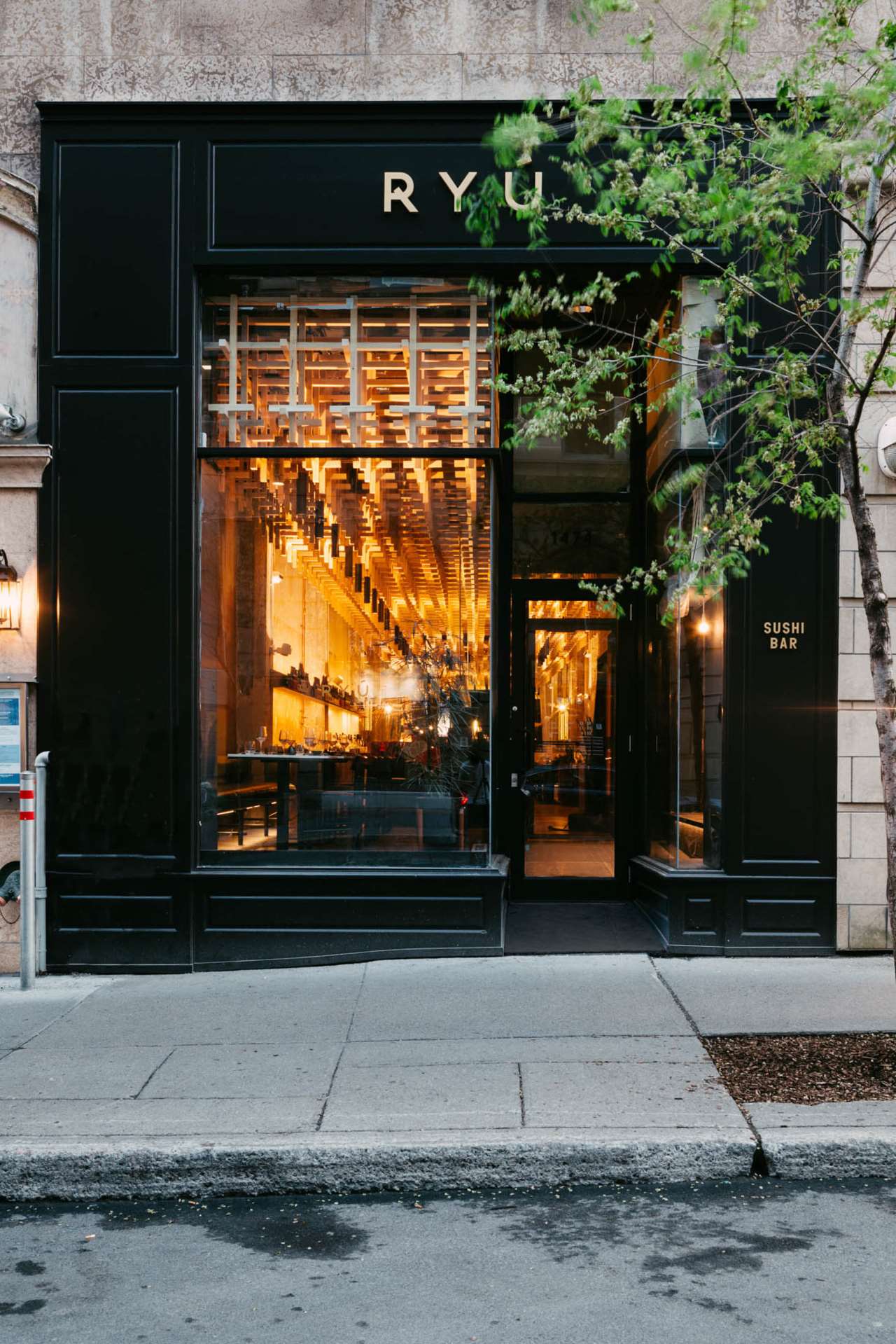
Photo by David Dworkind.
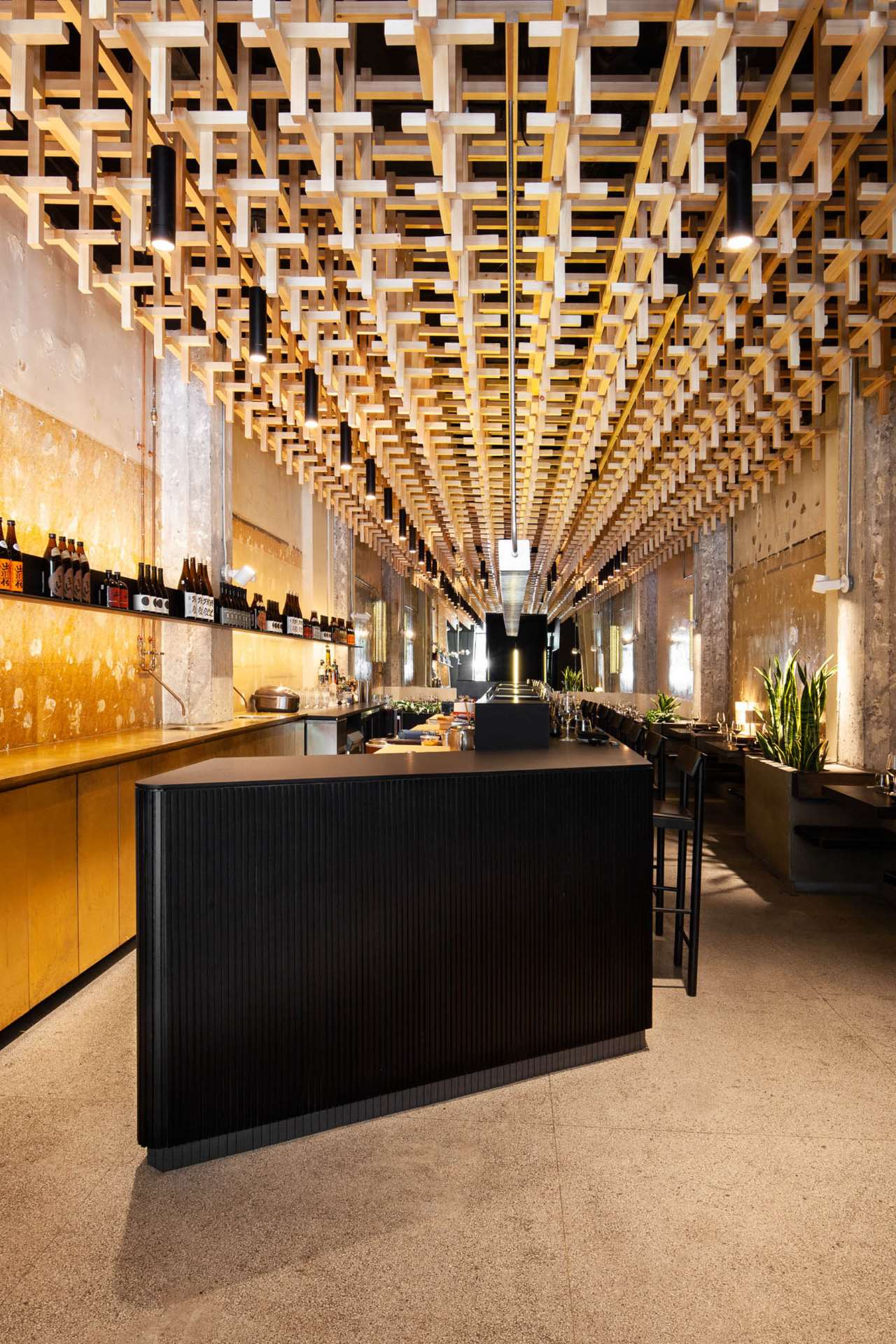
Photo by David Dworkind.
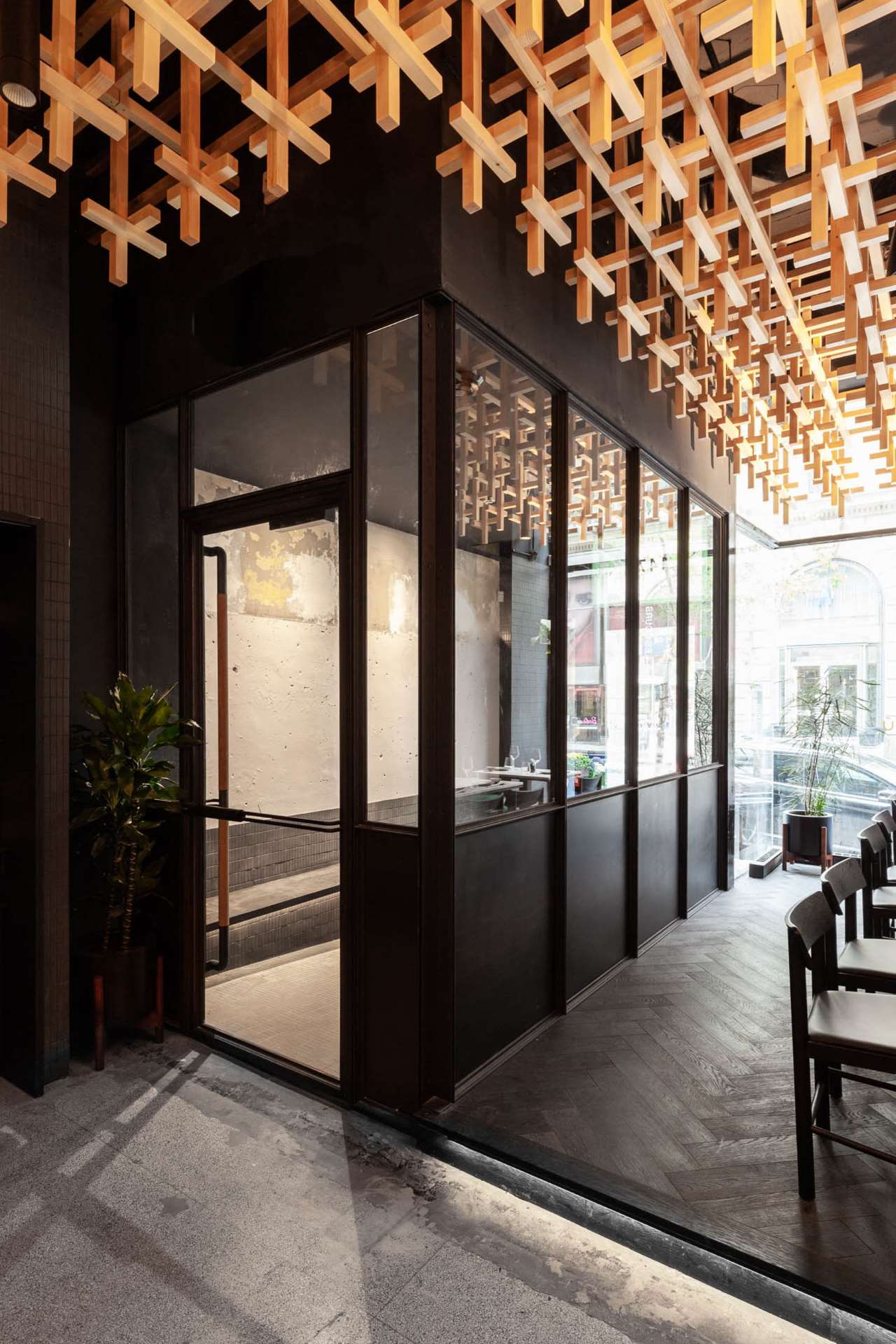
Photo by David Dworkind.
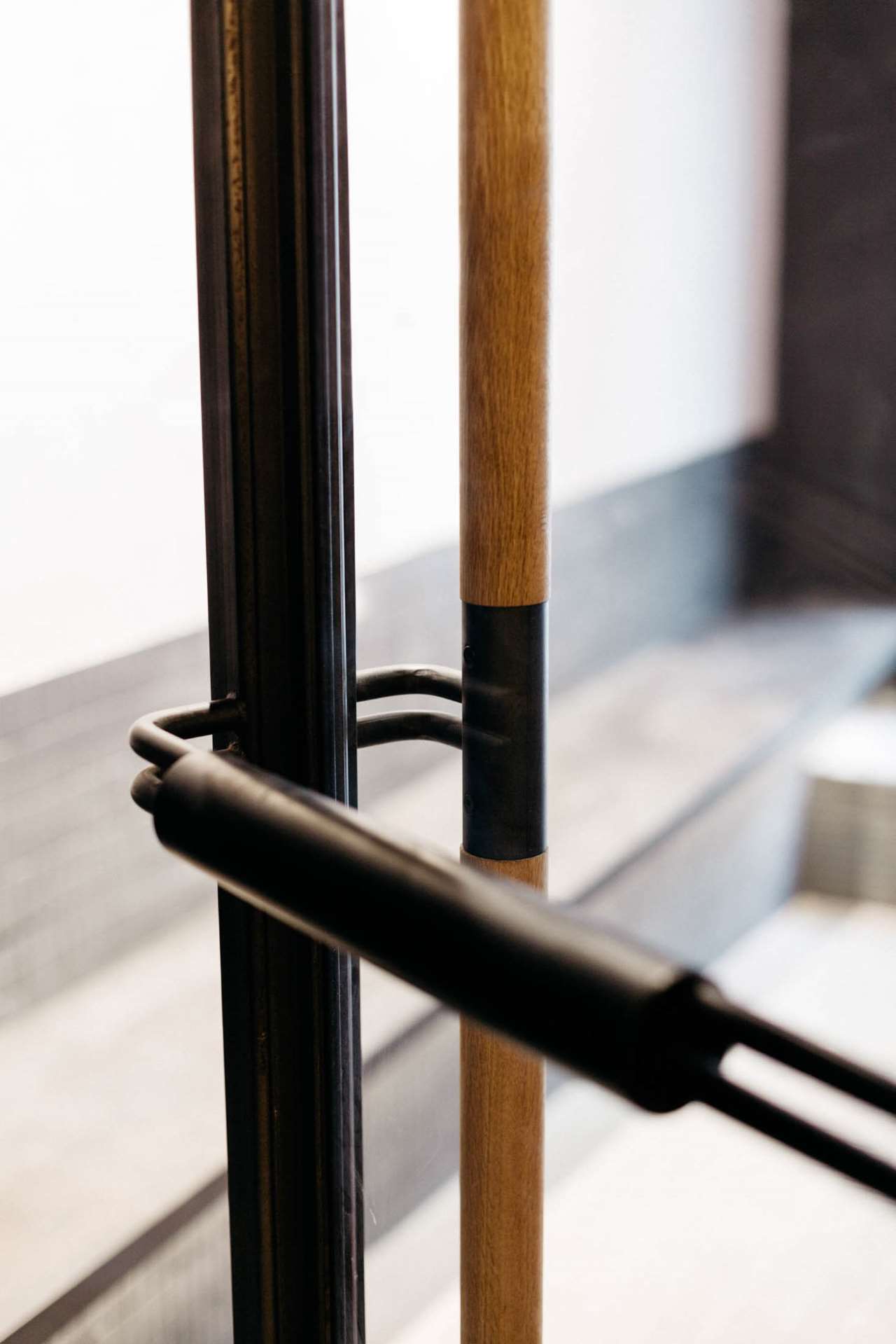
Photo by David Dworkind.
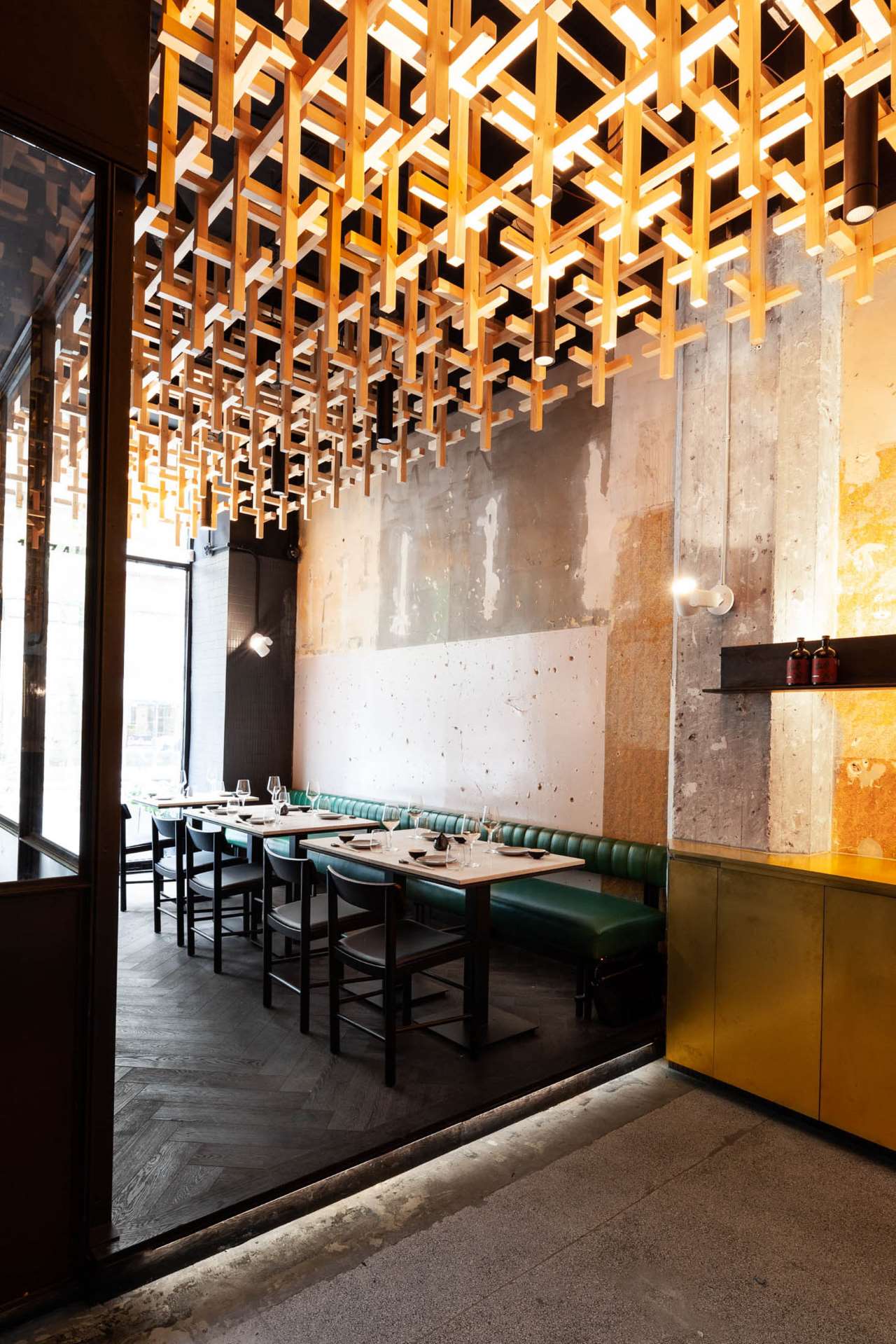
Photo by David Dworkind.
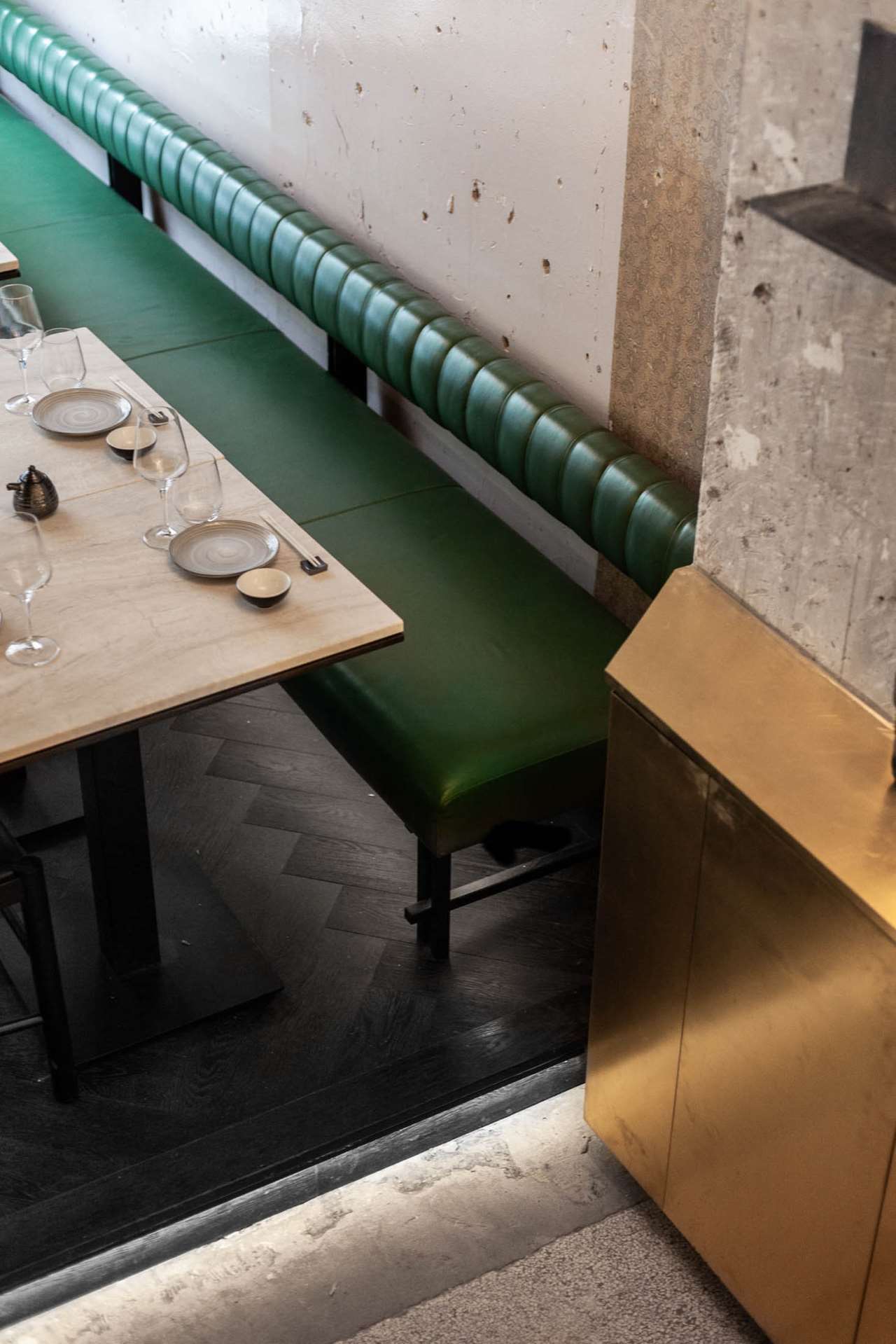
Photo by David Dworkind.
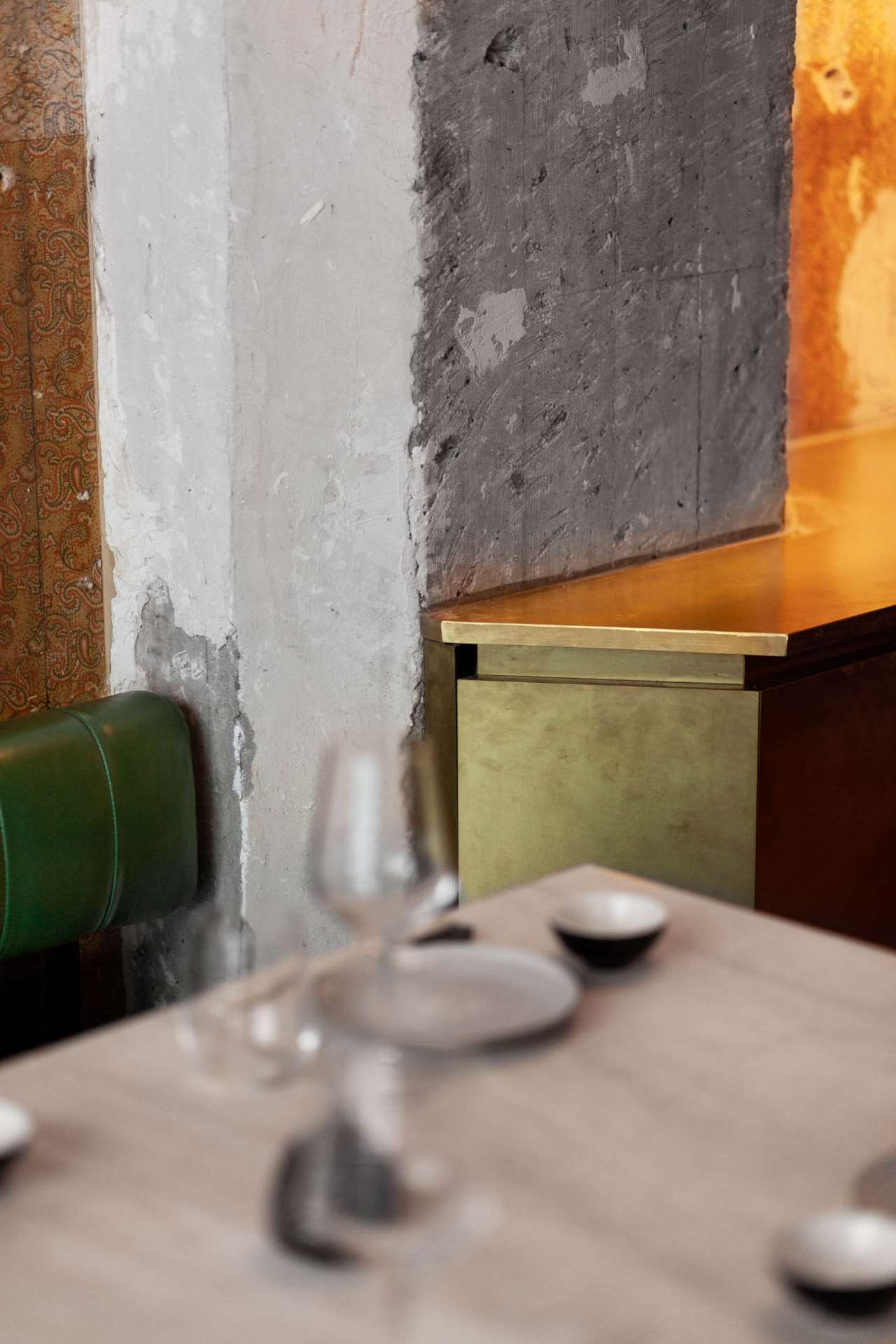
Photo by David Dworkind.
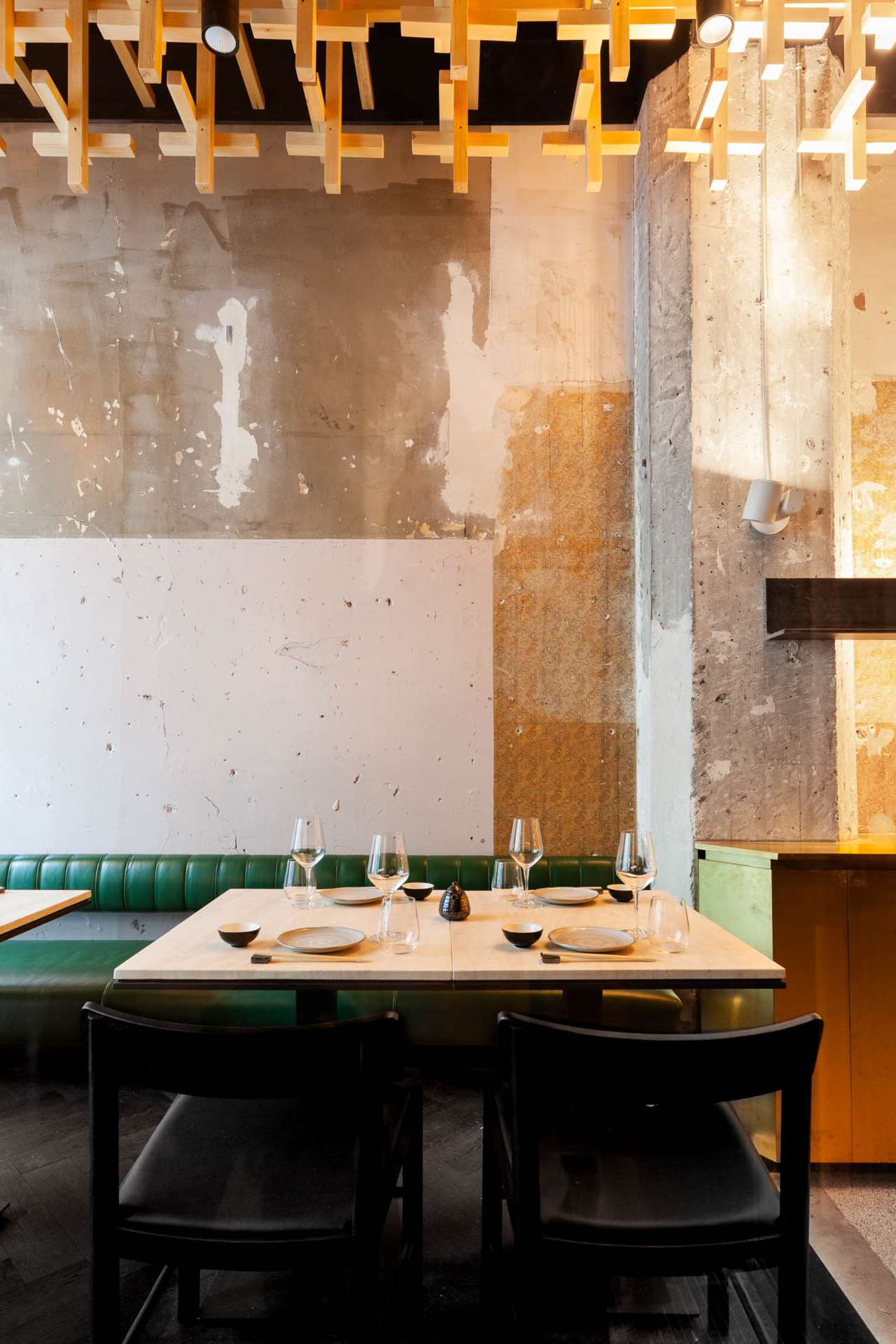
Photo by David Dworkind.
The wear and tear of the exposed building fabric is boldly complemented by a series of architectural interventions showcasing subtle sophistication and detailed craftsmanship. Running the entire length of the space, a suspended, sculptural installation of interconnected wooden battens alludes to traditional Japanese woodwork while also concealing the service ducts on the ceiling. Just as dramatic is the long bar counter in the centre of the restaurant that breaks down the elongated floor plan into front, middle and back sections. Made from Polaris, a synthetic matte black material with a velvety smoothness, and featuring gently curved edges, the bar counter is a paradigm of contemporary minimalism and detailed refinement, as is the linear light fitting suspended above, which is made of 370 pieces of laser cut aluminium spaced with brass sleeves—a design that is also shared by several wall scones—and the monolithic brass back bar, above which a 10-metre-long steel bracket anchored on the columns displays over 100 bottles of sake and Japanese whisky.
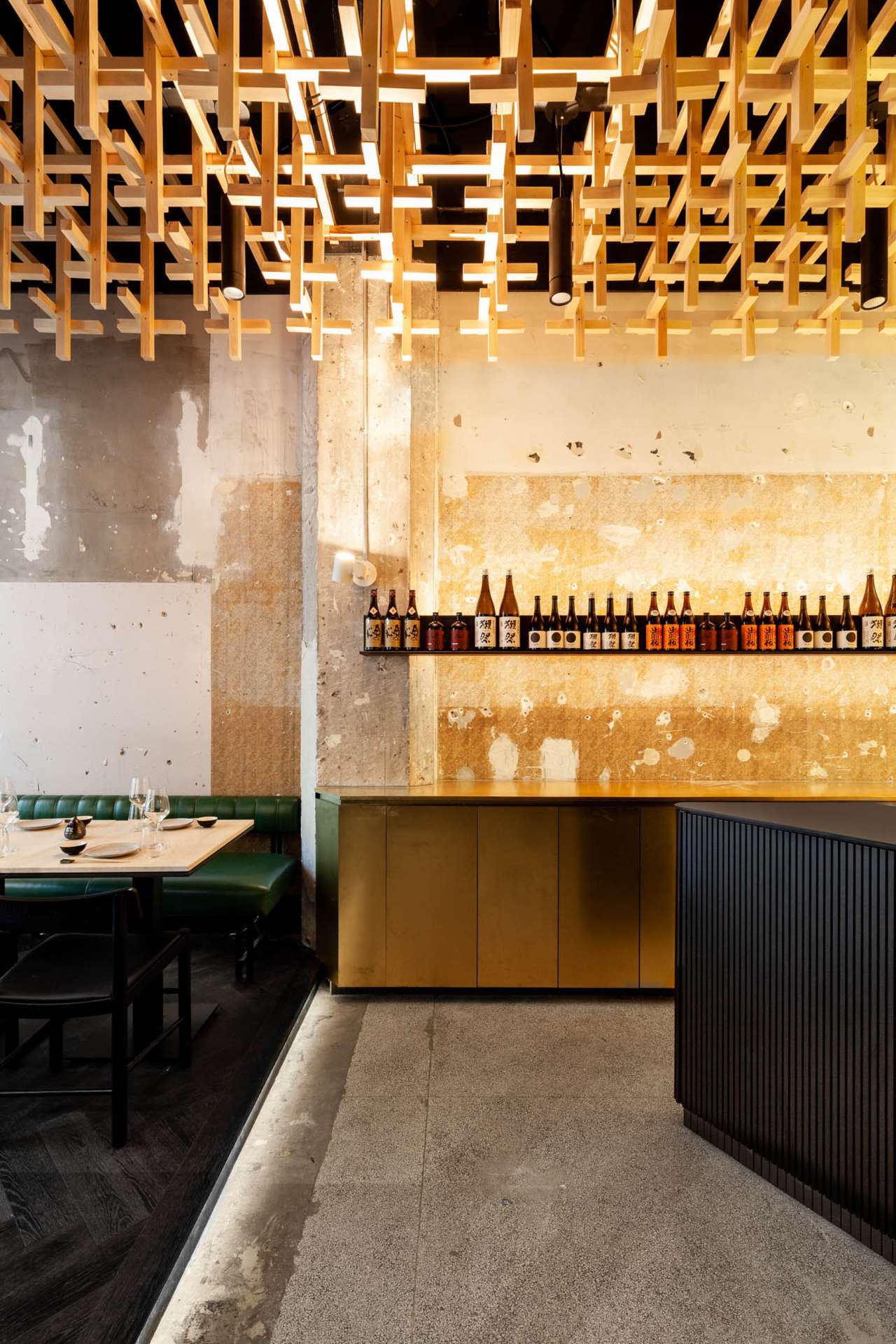
Photo by David Dworkind.
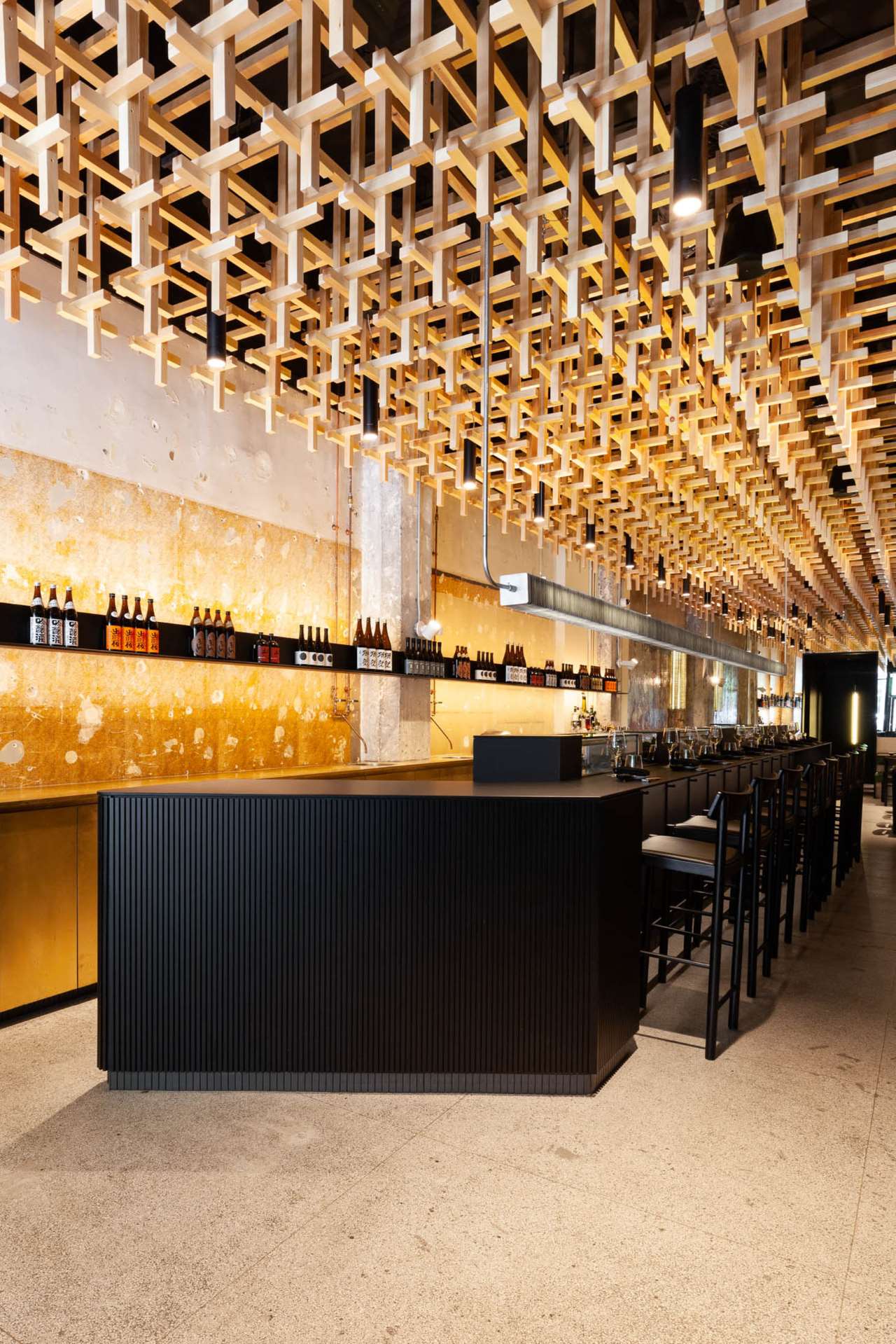
Photo by David Dworkind.
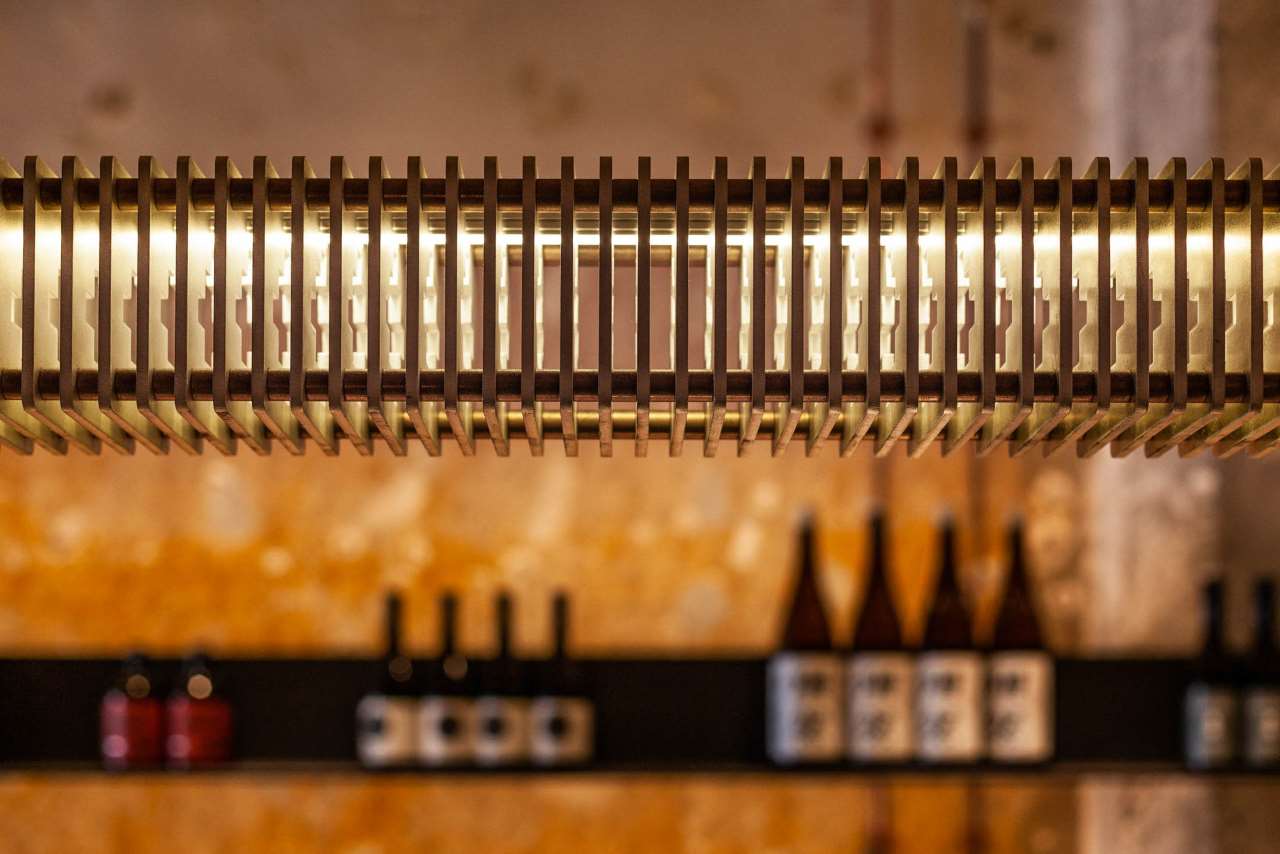
Photo by David Dworkind.
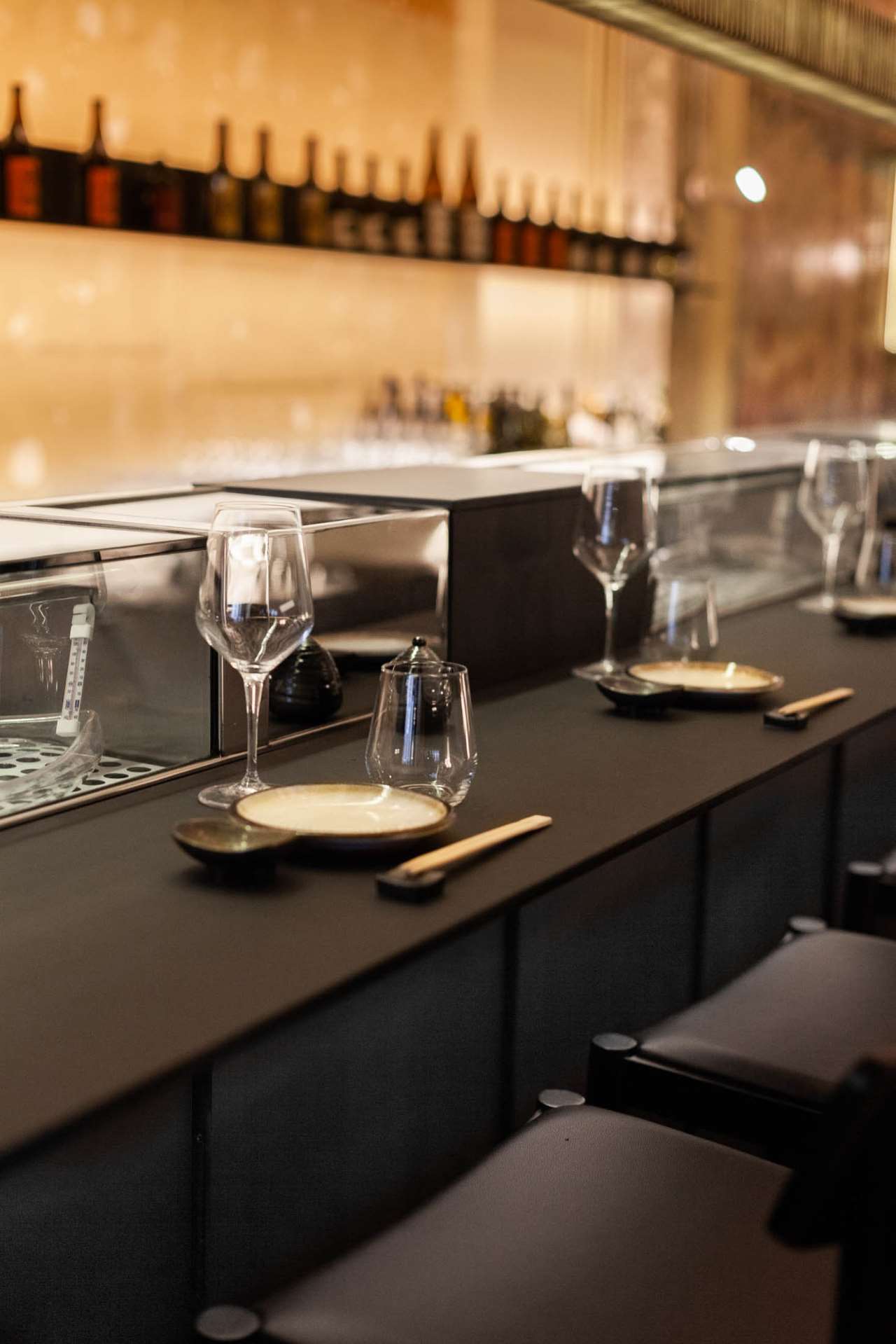
Photo by David Dworkind.
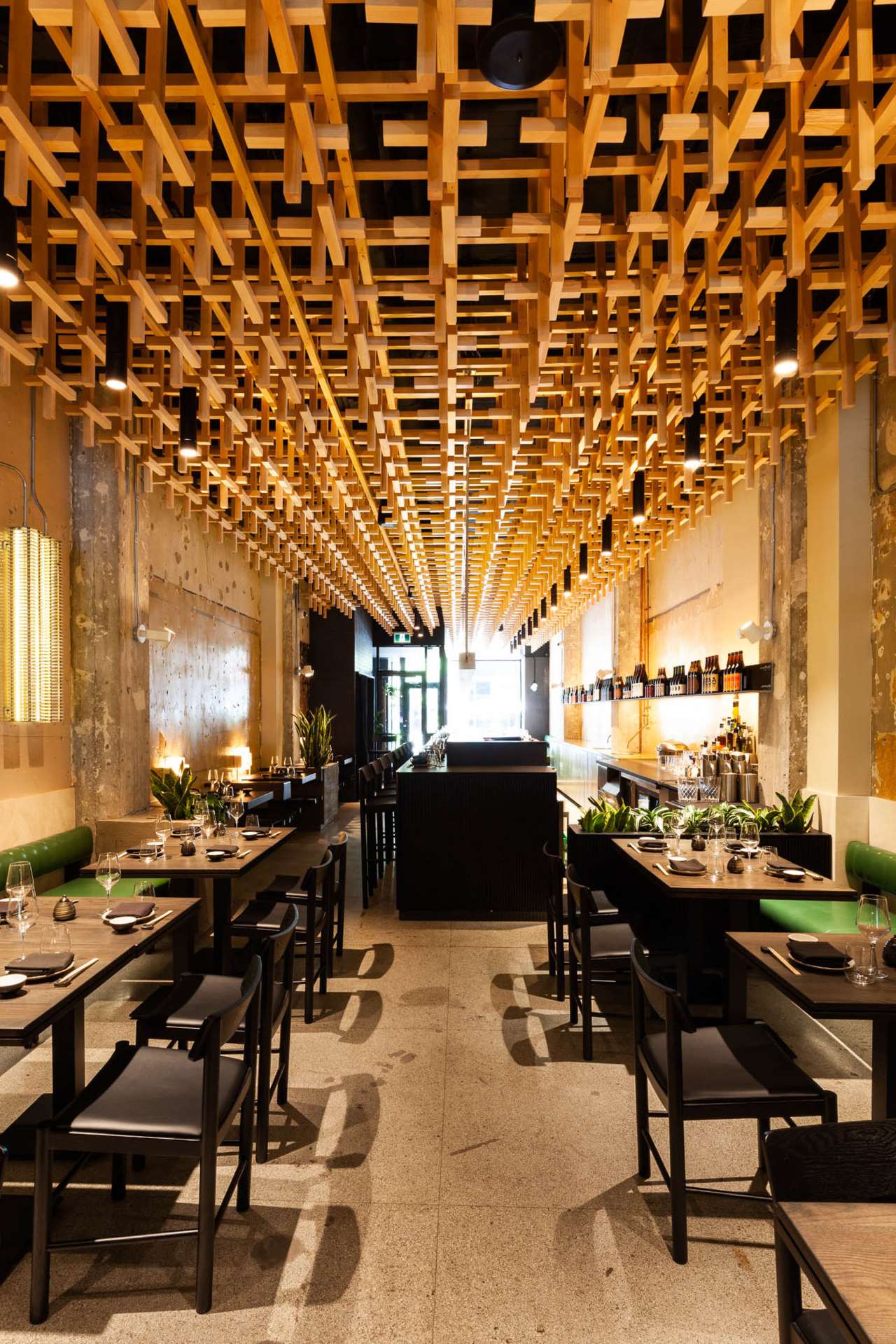
Photo by David Dworkind.
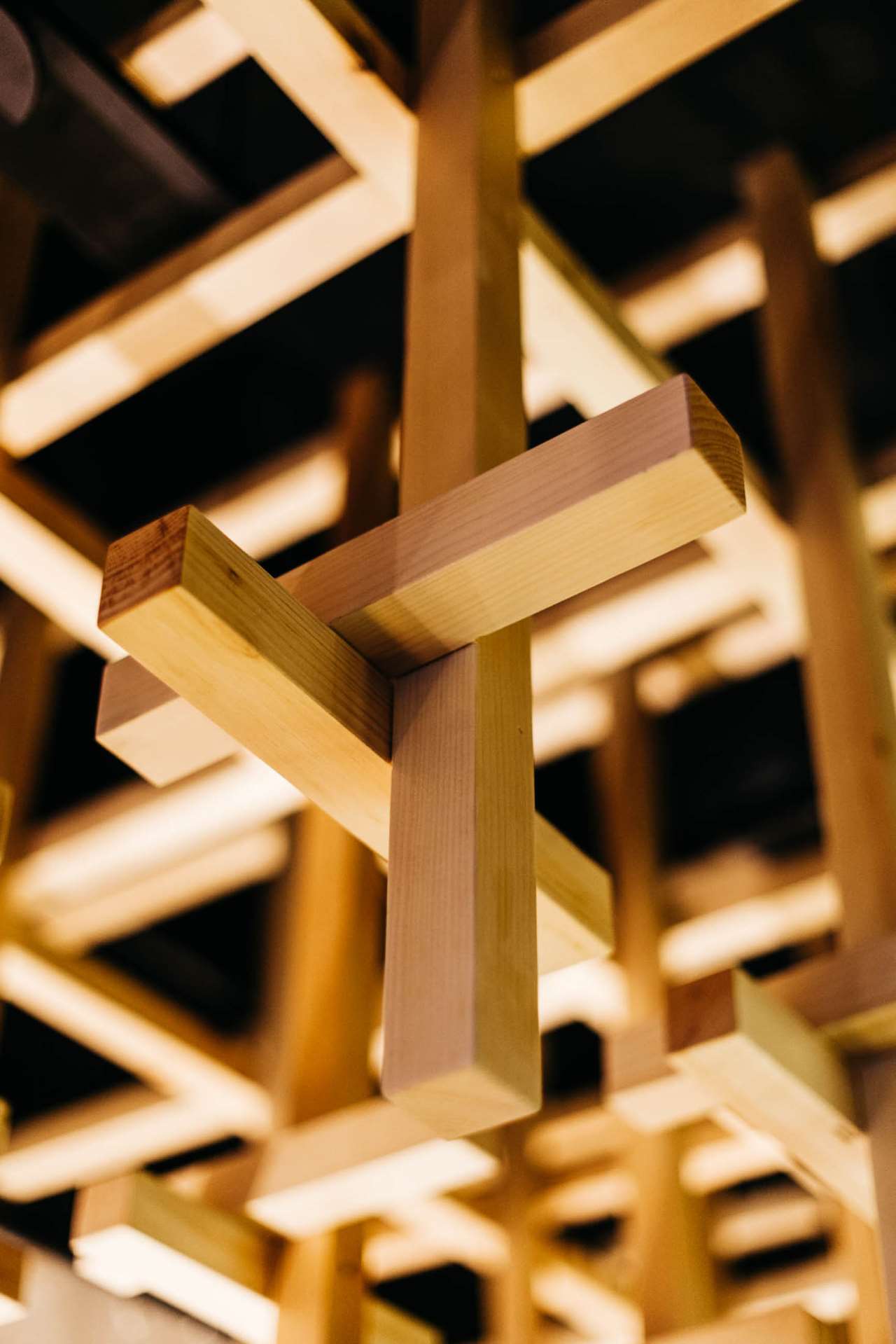
Photo by David Dworkind.
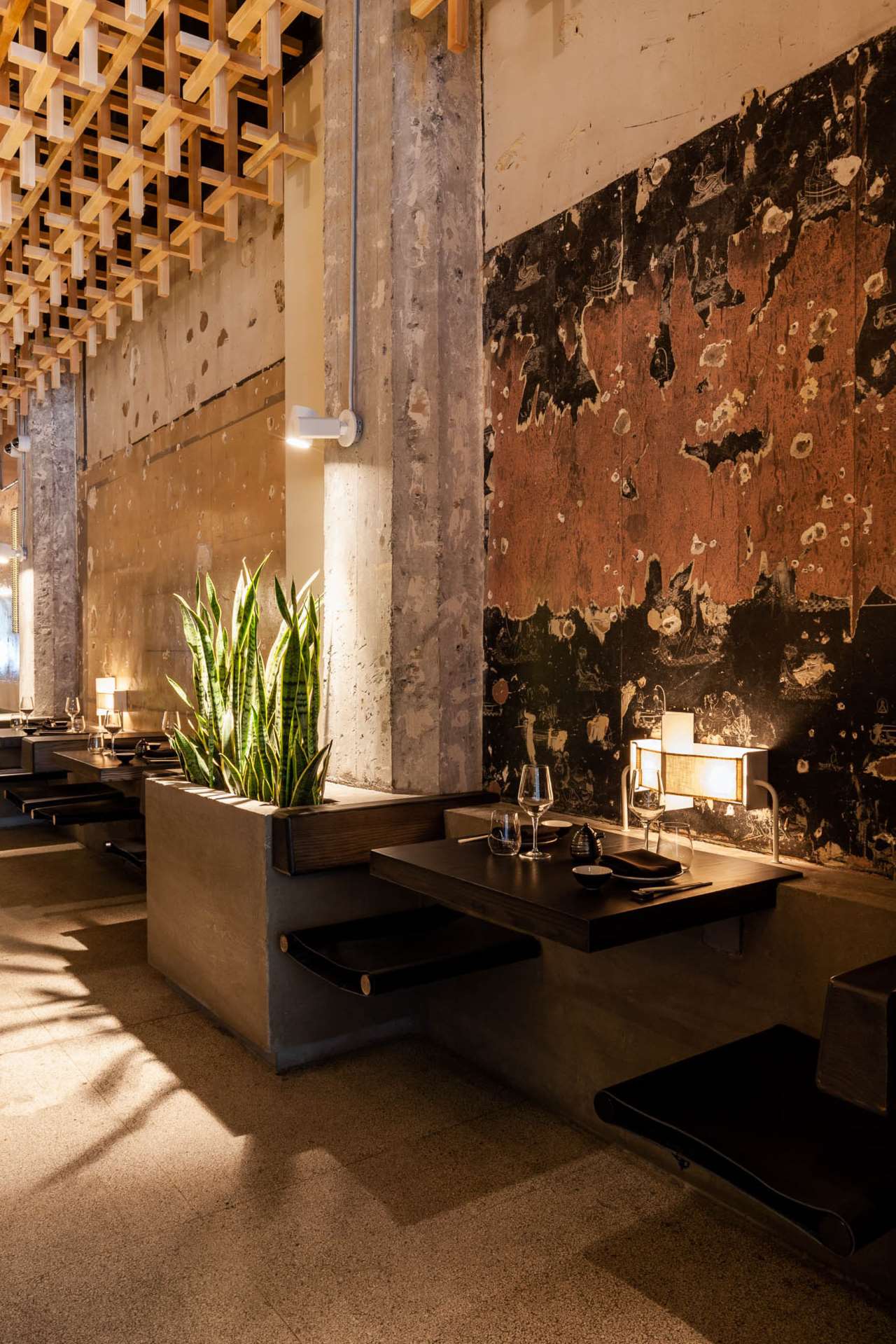
Photo by David Dworkind.
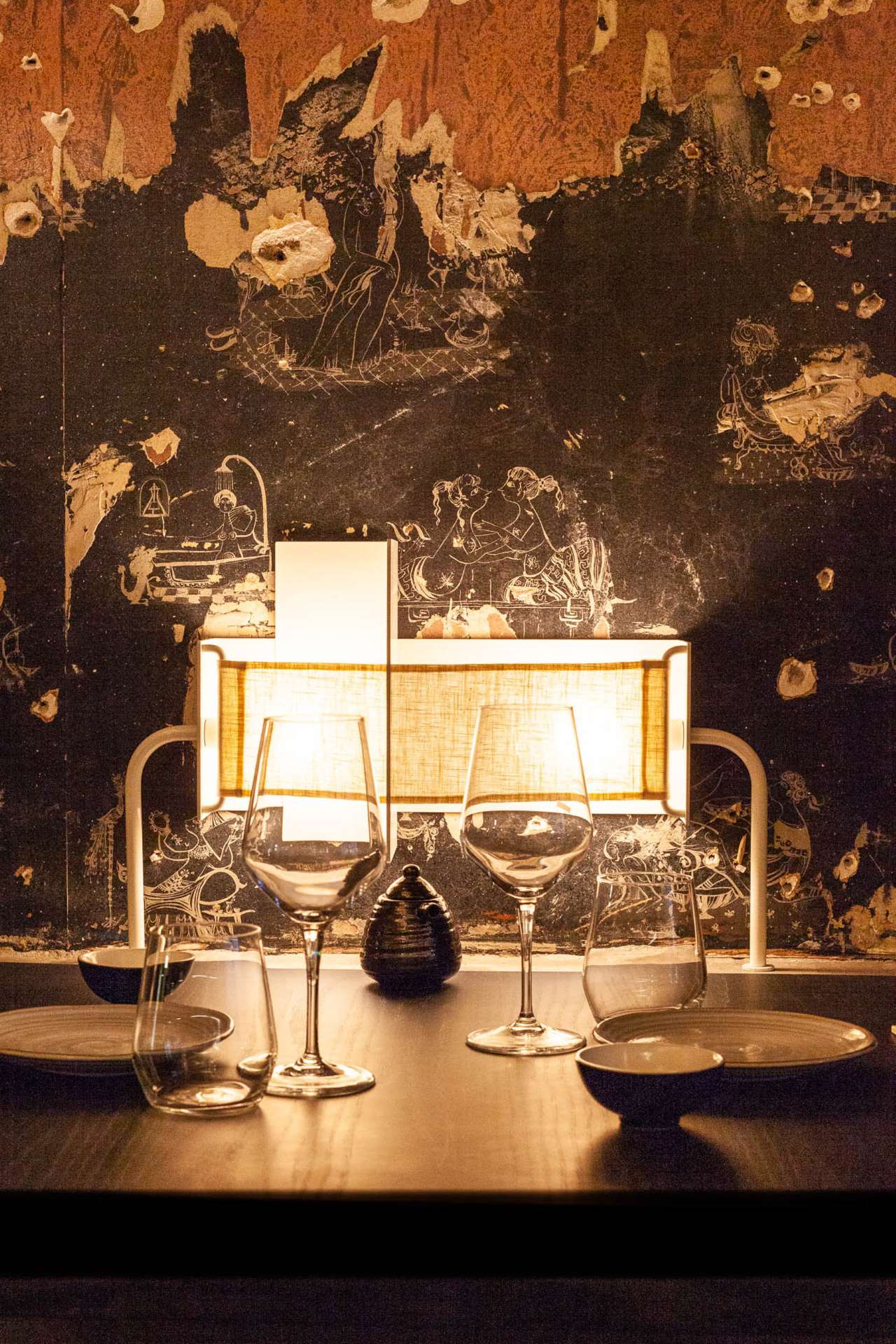
Photo by David Dworkind.
The unexpected buoyancy of the bottle-displaying steel bracket is echoed by the cantilevered seating on the opposite wall. Ingeniously supported on steel tubes jutting out of the concrete wall that have been wrapped in dark brown leather or timber veneer, the construction industriously combines a handcrafted elegance with a DYI sensibility also reflected in the bespoke tables lamps made of folded steel and stretched linen. Meanwhile, green leather sumptuously upholstered banquette seating in the front and back of the restaurant along with exotic vegetation planted in concrete planters counterbalance the predominant earthy colour palette while further contributing to the tactile richness of the interiors.
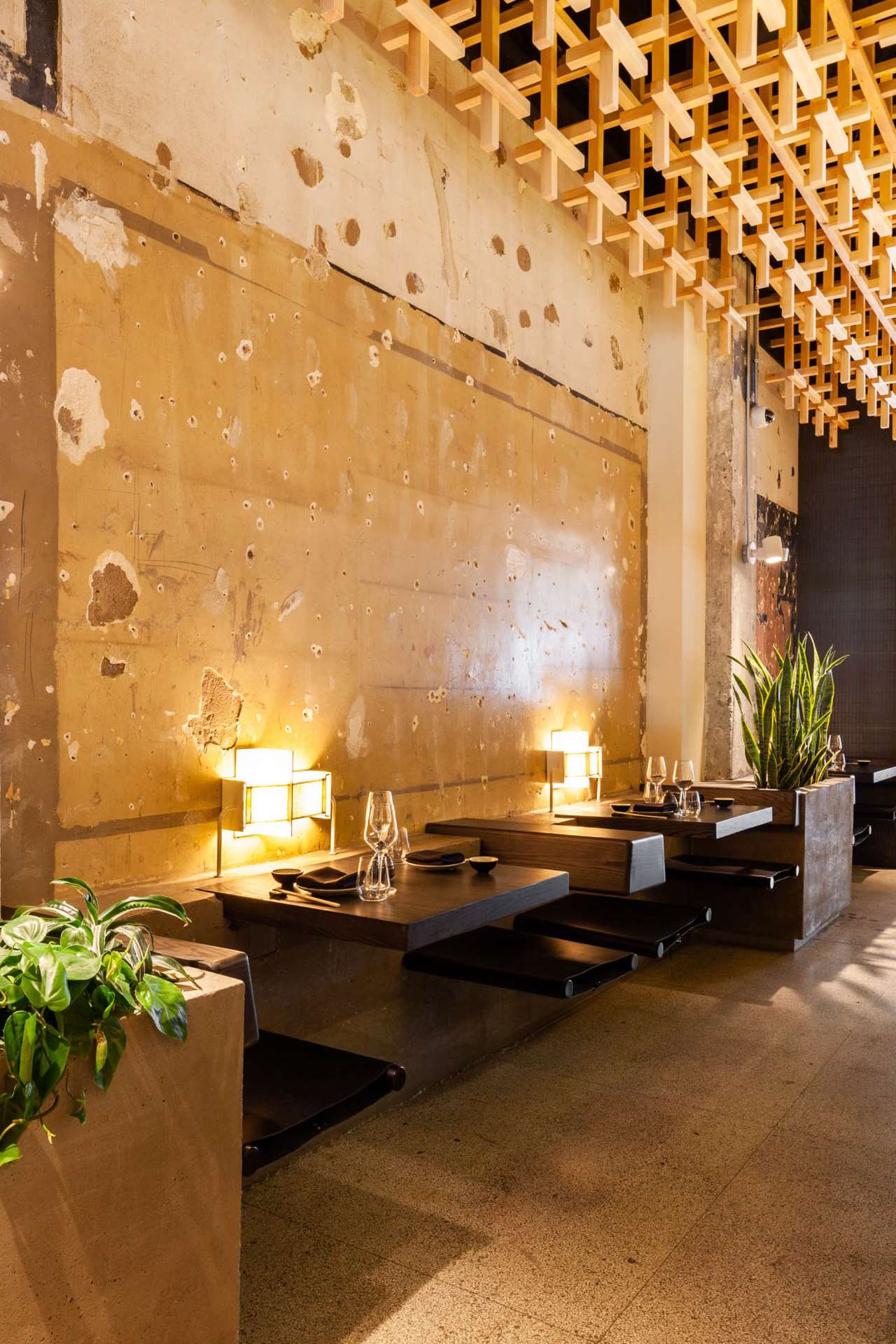
Photo by David Dworkind.
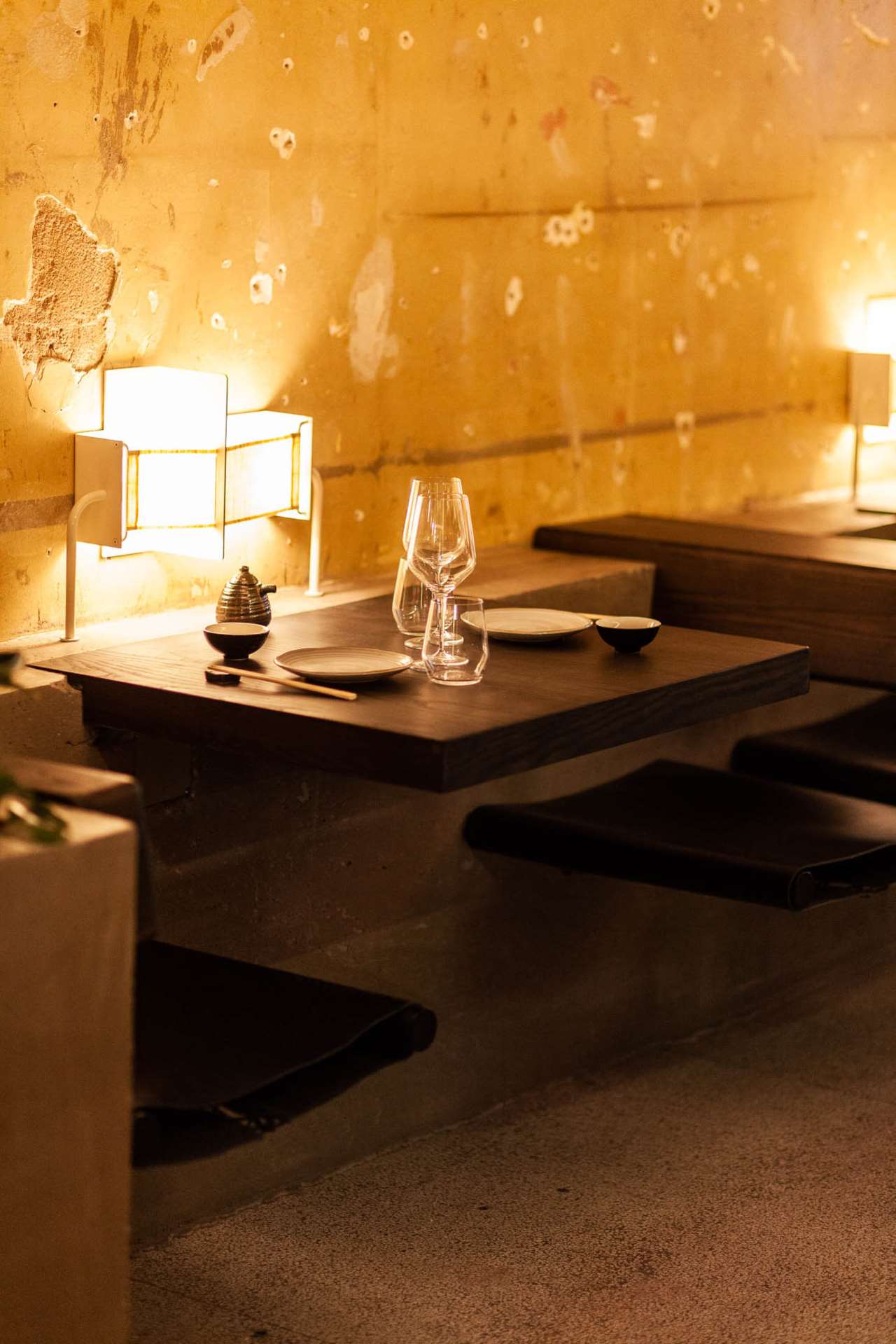
Photo by David Dworkind.
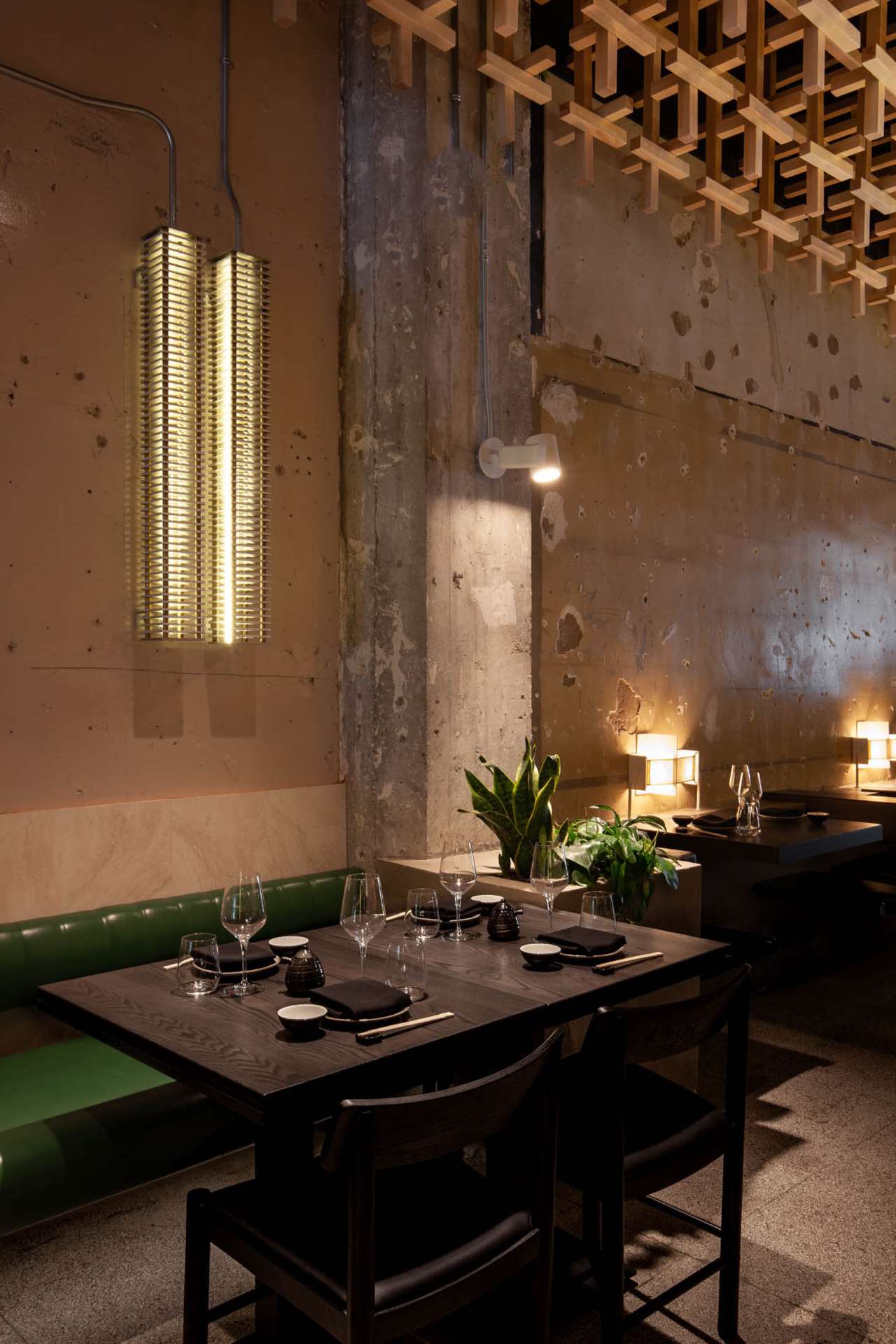
Photo by David Dworkind.
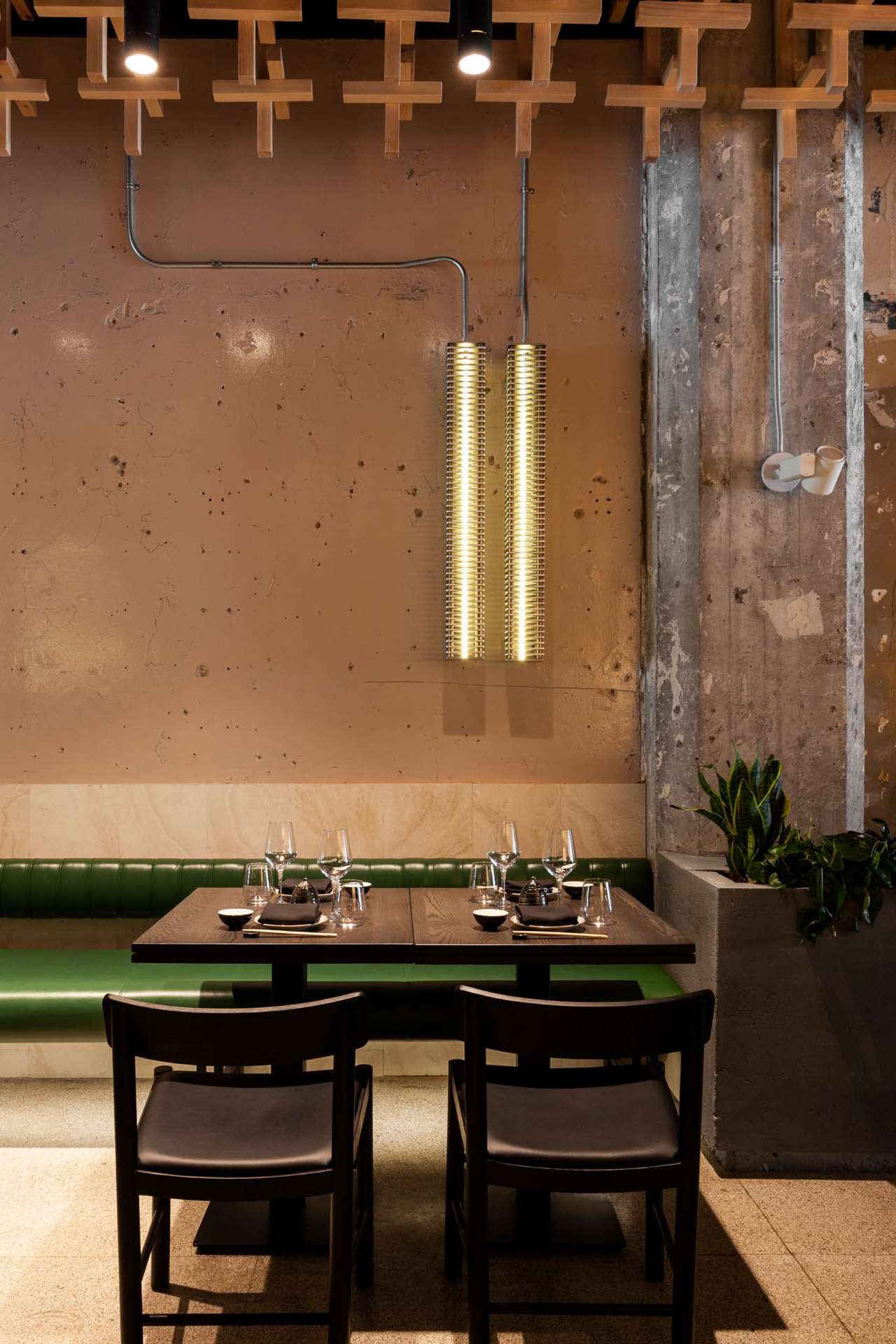
Photo by David Dworkind.
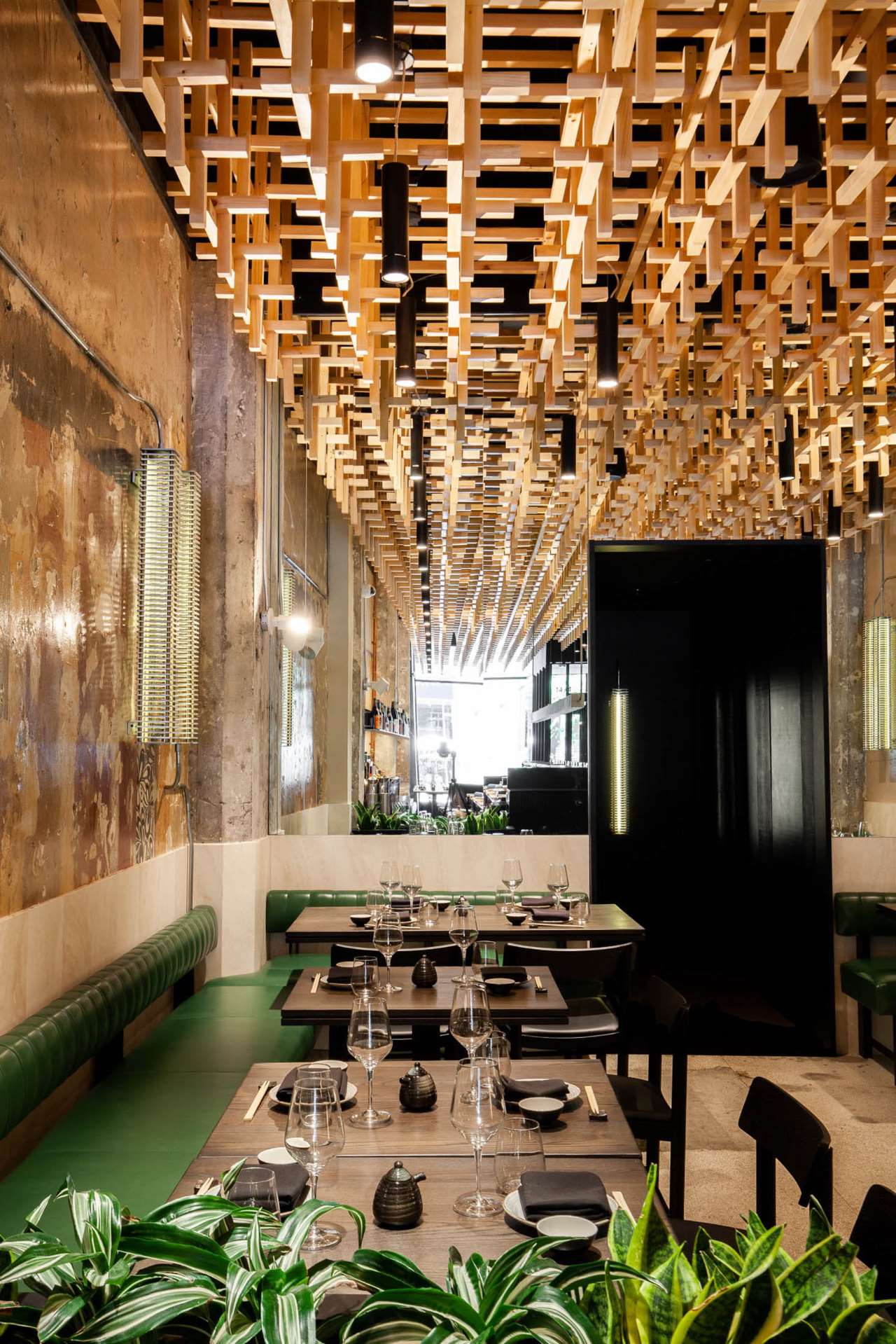
Photo by David Dworkind.
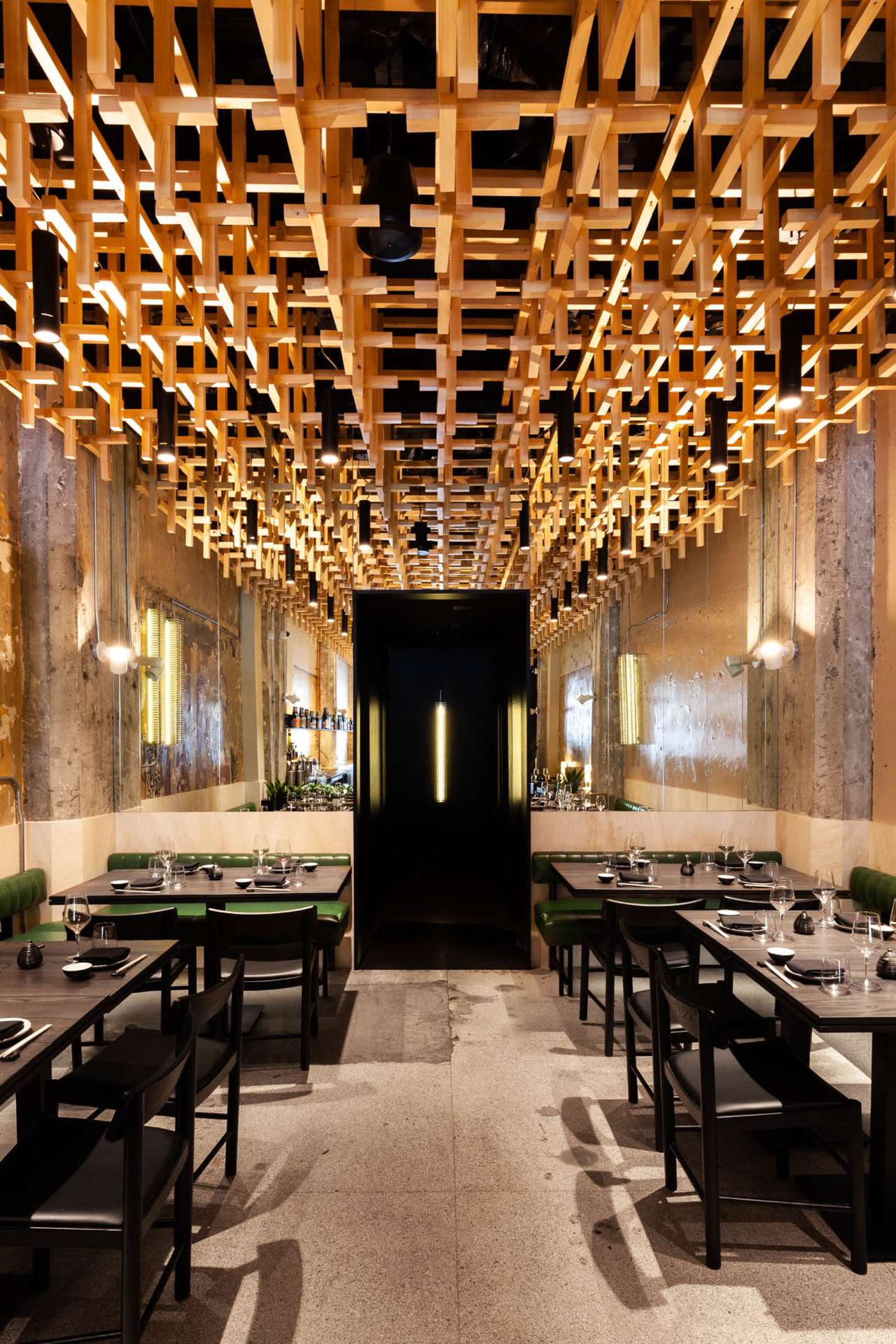
Photo by David Dworkind.
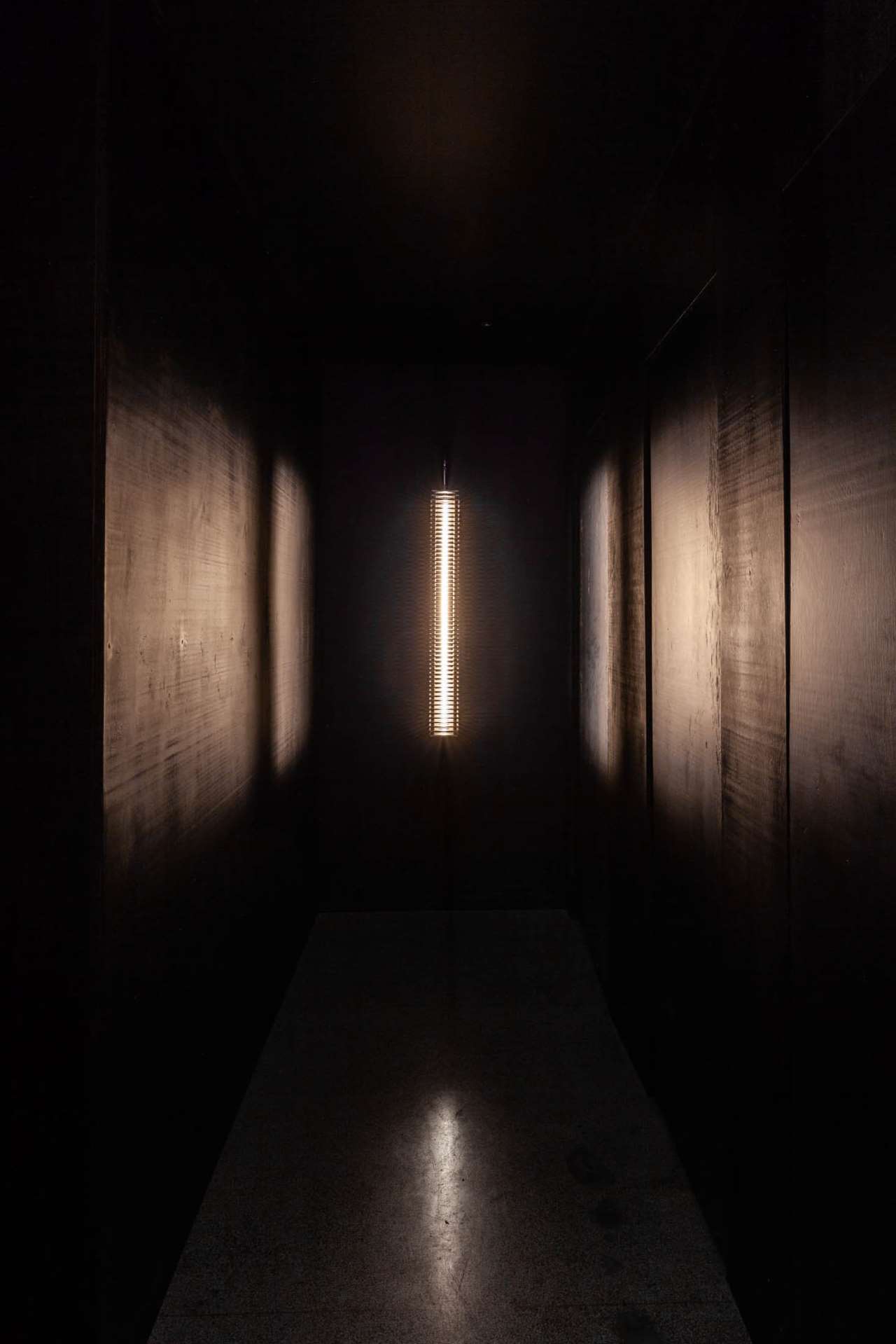
Photo by David Dworkind.
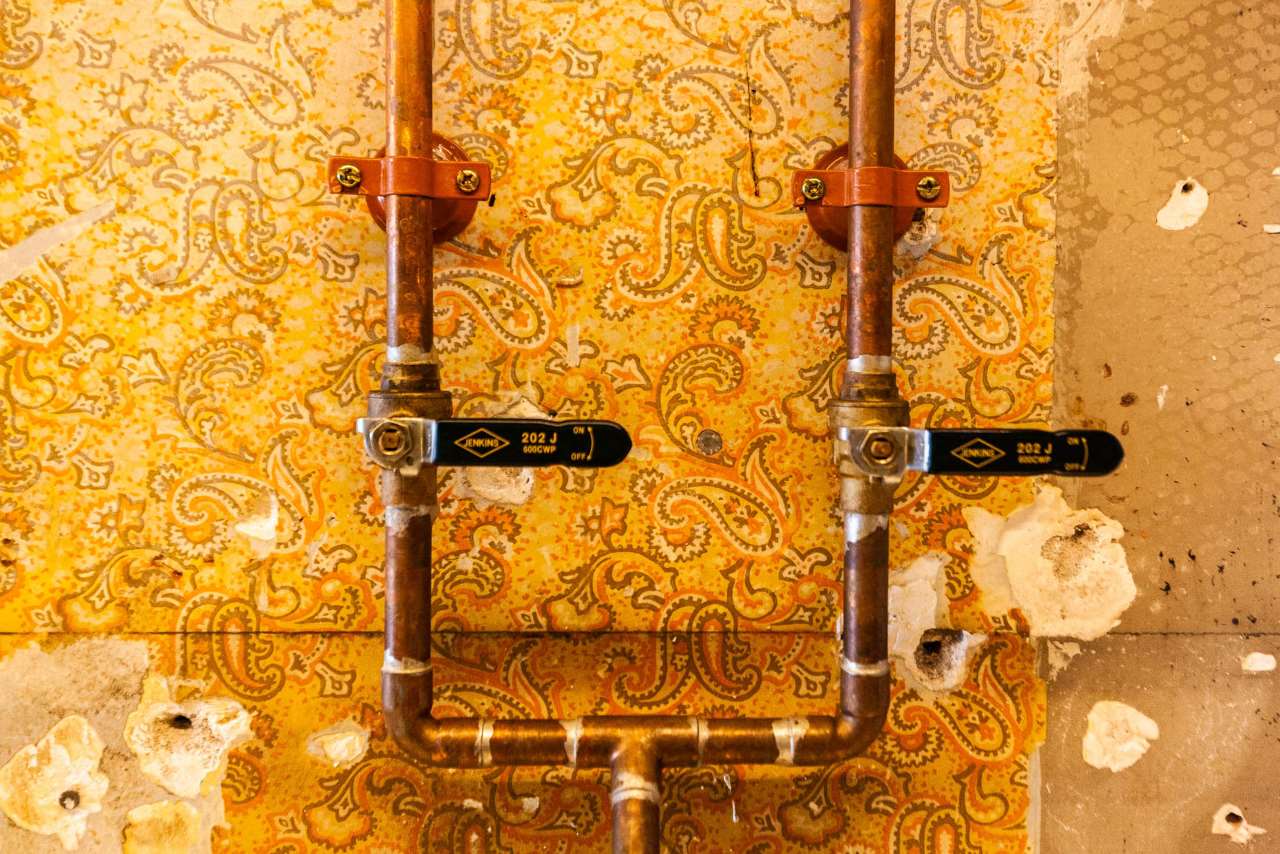
Photo by David Dworkind.
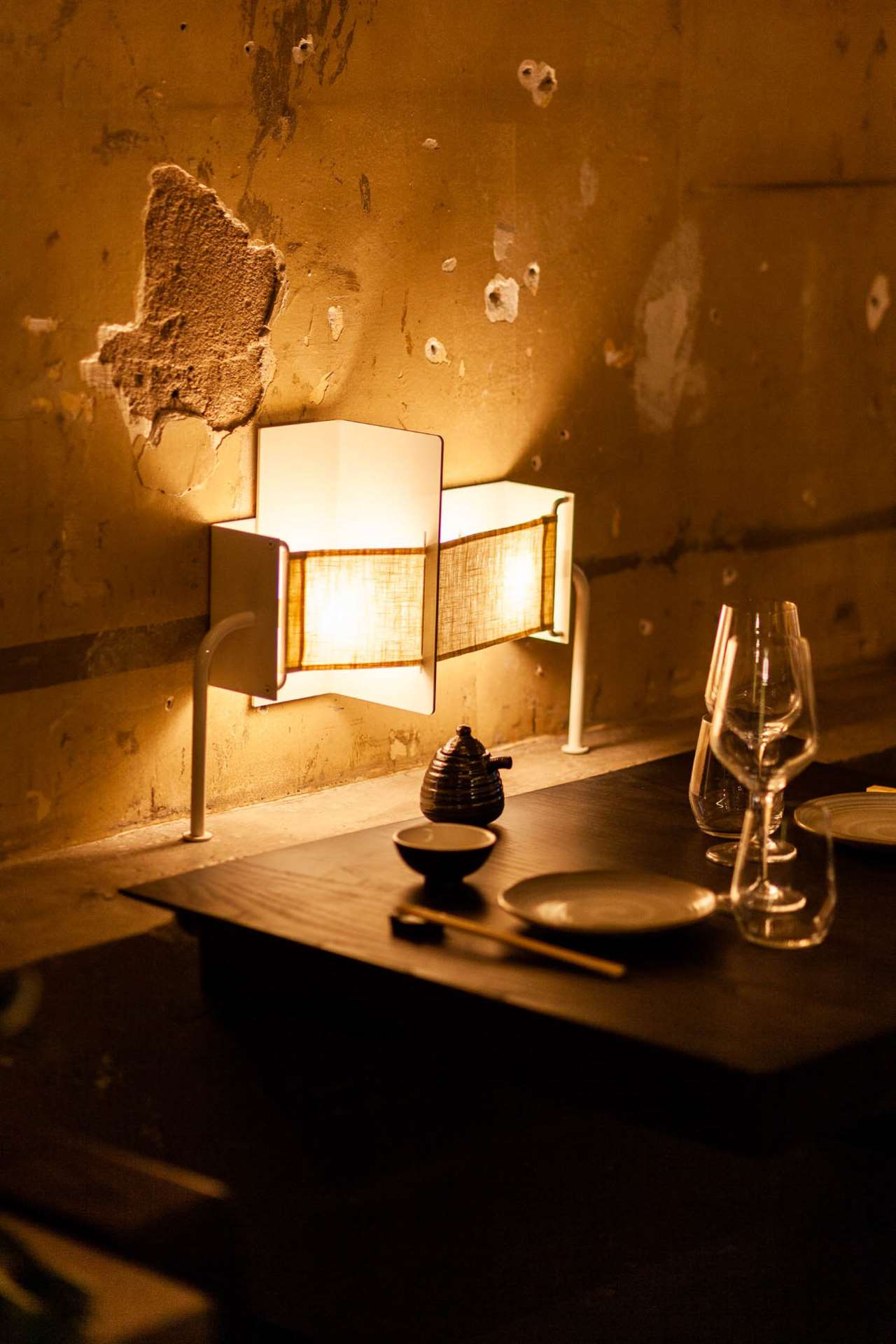
Photo by David Dworkind.
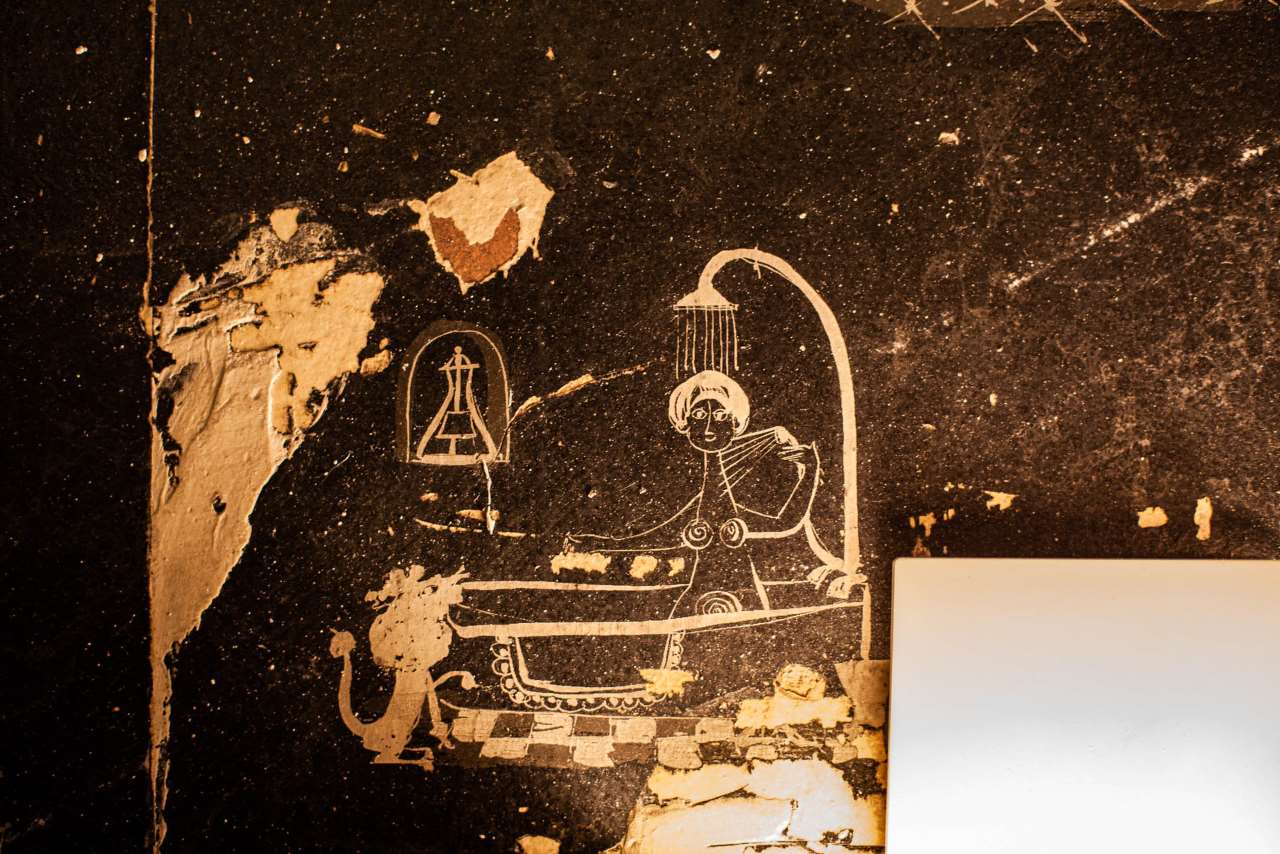
Photo by David Dworkind.
